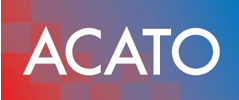An Overview of Threat Analysis in ISO 27001:2022 Compliance

What Is Threat Analysis and How to Address It in an ISMS According to ISO 27001:2022?
In today’s complex security landscape, organisations require a clear understanding of potential threats to safeguard their information and operations. Threat analysis within an Information Security Management System (ISMS) aligned with
is a systematic process of identifying, evaluating, and mitigating risks. With cyber risks—from malware to social engineering—rising, IT directors and business leaders must implement robust risk management frameworks. This article explains threat analysis in the context of ISO 27001:2022, outlines steps to perform threat assessments, describes best practices for integrating this analysis into risk management, and details how continuous monitoring supports these efforts. Overall, threat analysis is essential for compliance and organisational resilience.
Transitioning from an overview, the article now covers its definitions, methodologies, and practices as dictated in ISO 27001:2022.
What Does Threat Analysis Mean in the Context of ISO 27001:2022?
Threat analysis is the systematic examination of potential dangers that may exploit vulnerabilities and compromise the confidentiality, integrity, or availability of information assets. In ISO 27001:2022, it informs risk assessment and supports the selection of proper mitigation measures.
How Is Threat Analysis Defined Within an ISMS Framework?
It involves identifying, quantifying, and prioritising adversaries, events, and circumstances that might harm an organisation’s data. Both qualitative judgments and quantitative measures—such as likelihood and impact—are used. For example, an organisation may assess ransomware by reviewing its frequency in the industry, potential downtime losses, and backup system robustness. This mapping against assets and vulnerabilities helps organisations articulate their risk posture and implement proportionate controls, while remaining flexible to emerging threats.
Why Is Threat Analysis Critical for ISO 27001:2022 Compliance?
Threat analysis provides the basis for informed risk management decisions. Without it, organisations cannot prioritise risk treatments or demonstrate due diligence to auditors. Compliance requires documented security risks and evidence of countermeasures. Regular threat analysis also reinforces resilience by enabling the ongoing identification of new attack vectors—including advanced persistent threats and social engineering—thus preventing significant disruptions.
What Are Common Threat Types Considered in ISO 27001:2022?
ISO 27001:2022 recommends consideration of various threats, including:
- Cyber Attacks: Such as phishing, malware, and ransomware targeting digital systems.
- Insider Threats: When employees or partners misuse access privileges.
- Physical Threats: Including natural disasters, theft, and vandalism affecting IT infrastructure.
- Social Engineering: Manipulative tactics aimed at extracting confidential information.
- Technological Failures: Issues like database corruption or network outages.
- Supply Chain Risks: Vulnerabilities introduced by external vendors or service providers.
Including these threat types ensures a structured, risk-based approach that meets ISO 27001 requirements.
How Do You Conduct Effective Threat Assessment in ISO 27001:2022?

A thorough threat assessment in ISO 27001:2022 means identifying and evaluating factors that could compromise security, beyond simple identification. It quantifies threats based on potential asset impacts and readiness for mitigation.
What Are the Key Steps in Performing a Threat Assessment?
Key steps include:
- Identification of Assets and Vulnerabilities: Create an inventory of information assets and document related vulnerabilities.
- Threat Identification: Use internal audits, industry reports, and threat intelligence feeds to record potential dangers such as phishing trends or persistent threat groups.
- Assessment of Likelihood and Impact: Assign each threat a risk rating using tools like risk matrices.
- Prioritisation and Documentation: Rank threats based on overall risk scores and record findings in a risk register for future reference.
This blended approach—combining quantitative data and expert insights—ensures that risk evaluations are both realistic and current.
Which ISMS Threat Analysis Techniques Align With ISO 27001:2022?
Techniques include:
- Risk Matrix Analysis: Graphically plotting threats against likelihood and impact.
- Scenario Analysis: Evaluating potential outcomes based on different threat scenarios.
- Fault Tree Analysis: Mapping failure points leading to hazards.
- SWOT Analysis: Assessing strengths, weaknesses, opportunities, and threats.
- Penetration Testing and Vulnerability Scanning: Providing empirical evidence of system weaknesses.
These methods together offer a comprehensive view and ensure compliance with ISO 27001:2022.
How to Identify and Prioritise Threats Based on Risk Levels?
Steps involve:
- Data Collection: Gather information from logs, past incidents, and threat feeds.
- Scoring System Implementation: Quantify risk by multiplying probability and impact (e.g., a threat scoring 8/10 on likelihood and 9/10 on impact yields a composite score suggesting urgent action).
- Risk Matrix Application: Categorise threats into high, medium, and low risk.
- Stakeholder Consultation: Validate the analysis with input from IT experts and department heads.
This structured method results in a clear, actionable list guiding risk treatment decisions.
What Are Best Practices for Implementing Threat Analysis in an ISMS?
Embedding threat analysis into broader risk management ensures it is not a one-off task but a continuous process.
How to Integrate Threat Analysis Into Risk Assessment Processes?
Integration involves:
- Alignment with Business Objectives: Link threat analysis to strategic goals to focus on risks disrupting core operations.
- Regular Reviews: Perform threat assessments as part of periodic risk reviews to keep the risk register current.
- Documentation and Reporting: Maintain detailed records for audit trails and regulatory reviews.
- Collaboration Across Teams: Involve IT, compliance, and operational teams to benefit from diverse perspectives.
- Training and Awareness: Regularly educate employees on threat identification and its role within the ISMS.
The table below summarises key integration components:
| Component | Description | Benefit | Example |
|---|---|---|---|
| Business Alignment | Match security initiatives with strategic goals | Focus on high-impact risks | Prioritising threats to financial systems |
| Regular Reviews | Schedule ongoing assessments | Keeps risk data current | Quarterly review meetings |
| Documentation & Reporting | Maintain detailed logs | Aids compliance and audit trails | Digitally maintained risk register |
| Cross-Team Collaboration | Engage multiple departments | Enhances threat identification | Involving IT, HR, and operations |
| Employee Training | Regular awareness sessions | Reduces human error | Annual cybersecurity training |
What Controls Should Be Applied to Address Identified Threats?
Organisations must choose controls tailored to each risk: ISO 27001 awareness training
- Technical Controls: Firewalls, intrusion detection systems, encryption, and multi-factor authentication to safeguard against cyber threats.
- Administrative Controls: Policies, procedures, internal audits, and training programmes.
- Physical Controls: Access control systems and surveillance to protect physical assets.
Balanced control implementation and periodic testing (e.g., penetration tests) ensure that controls remain effective and compliant with ISO 27001:2022.
How to Use Automation and Tools to Enhance Threat Analysis?
Automation improves detection and response by:
- Automated Vulnerability Scanners: Continuous monitoring for known issues.
- Security Information and Event Management (SIEM): Aggregating events to provide real-time alerts.
- Threat Intelligence Platforms: Integrating external data to predict emerging patterns.
- Machine Learning Algorithms: Identifying unusual traffic patterns that may signal a breach.
These tools reduce manual workload while increasing accuracy and timeliness in threat detection.
How Does Ongoing Monitoring Support Threat Analysis in ISO 27001:2022?

Continual monitoring ensures new vulnerabilities and threat vectors are quickly identified and addressed, helping adjust security controls proactively. information security guidelines
What Role Does Threat Intelligence Play in ISMS Threat Analysis?
Threat intelligence collects and analyses external data on cybercriminal tactics and vulnerabilities. It acts as an early warning system—if reports show increased ransomware activity, for instance, the organisation may enhance backup procedures and employee training. This keeps threat analysis dynamic and relevant.
How to Establish Continuous Threat Monitoring and Review Cycles?
Steps include:
- Real-Time Monitoring Systems: Automated data collection from networks, endpoints, and applications.
- Regular Security Audits: Internal and external audits to ensure monitoring systems function optimally.
- Scheduled Reviews: Periodic meetings with key stakeholders to review threat intelligence and update risk registers.
- Incident Response Drills: Simulated incidents to test response effectiveness.
- Feedback Loops: Use outcomes to refine future threat assessments.
How to Measure the Effectiveness of Threat Analysis in Reducing Risks?
Metrics include:
- Reduction in Incident Frequency: Monitor decreases in security incidents.
- Mean Time to Detect (MTTD) and Respond (MTTR): Faster detection and response indicate effectiveness.
- Audit and Compliance Outcomes: Audit results that show compliance with ISO 27001:2022.
- Return on Security Investment (RoSI): Financial benefits from averted incidents.
- Stakeholder Feedback: Regular business unit reviews indicating improved security.
These metrics help organisations refine their ISMS strategies for long-term resilience.
How to Address Common Challenges When Implementing Threat Analysis in ISMS?
Implementing effective threat analysis can be hampered by resource limitations, evolving threats, and inconsistent stakeholder engagement.
What Are Typical Obstacles in Threat Analysis According to ISO 27001:2022?
Common challenges include:
- Resource Limitations: Budget and staffing constraints.
- Complex Organizational Structures: Difficulties in unifying threat analysis across departments.
- Rapidly Evolving Threats: New risks may outpace routine assessments.
- Data Overload: Excess information may obscure key insights.
- Stakeholder Engagement: Ensuring all parties understand and support the process.
How to Customize Threat Analysis for Different Organizational Needs?
Tailor the process by:
- Segmenting Assets: Different divisions may have unique risk profiles.
- Industry-Specific Modelling: Use sector-specific threat intelligence.
- Scalability: Design processes that grow with the organisation.
- Flexible Control Implementation: Adapt treatments based on budget and operational capacity.
- Regular Reassessment: Adjust frequency based on industry dynamics and regulatory changes.
How to Ensure Stakeholder Engagement and Awareness in Threat Analysis?
Improve engagement by:
- Clear Reporting: Translate technical findings into actionable business insights.
- Interactive Training: Conduct sessions on threat trends and compliance.
- Collaborative Workshops: Foster departmental cooperation to share ideas.
- Regular Updates: Incorporate threat analysis into business reviews.
- Feedback Mechanisms: Enable stakeholder input to continuously improve the process.
Enhanced engagement ensures prompt corrective actions and a stronger overall security posture.
What Is the Relationship Between Threat Analysis and Risk Treatment in ISO 27001:2022?

Threat analysis directly informs risk treatment by helping select appropriate controls and mitigation measures.
How Does Threat Analysis Inform Risk Treatment Planning?
It provides the data needed to: information security guidelines
- Identify Priority Areas: Highlight high-risk threats needing immediate action.
- Select Appropriate Controls: Decide on technical, administrative, or physical measures.
- Allocate Resources Efficiently: Direct investments based on clear risk scores.
- Develop Incident Response Plans: Tailor responses to the most critical threats.
This foundation ensures every risk treatment decision is data-driven and ISO 27001 awareness training compliant.
What Are Effective Risk Treatment Options for Identified Threats?
Options include:
- Risk Acceptance: Monitor low-cost threats when mitigation is not cost-effective.
- Risk Reduction: Enhance measures like access controls, encryption, and patching.
- Risk Transfer: Use cyber insurance or outsource risk management functions.
- Risk Avoidance: Change business practices to eliminate high-risk activities.
Each option is chosen based on its ability to lower risk scores and support
.
How to Document and Report Threat Analysis Results in ISMS?
Effective documentation involves:
- Detailed Risk Registers: Record each threat, its score, treatment, and follow-up.
- Standardised Reporting Formats: Use templates that meet ISO 27001:2022 standards.
- Audit Trails: Maintain records of changes, reviews, and responses.
- Stakeholder Reports: Prepare executive summaries for non-technical audiences.
- Integration with ISMS: Store all documentation in a central, accessible repository.
This traceability aids both internal governance and external audits.
How Can Organizations Maintain Compliance With ISO 27001:2022 Through Threat Analysis?
Maintaining compliance involves ongoing evaluation, adaptation, and thorough documentation. Threat analysis must be integrated into the broader ISMS.
What Documentation Is Required for Threat Analysis Under ISO 27001:2022?
Required documentation includes:
- Risk Assessment Reports: Analyses detailing threats, vulnerabilities, and risk scores.
- Risk Treatment Plans: Action plans with timelines and responsible parties.
- Policies and Procedures: Written guidelines outlining the threat analysis process.
- Incident Logs: Records of past security incidents and resolutions.
- Internal Audit Records: Documentation from audits evaluating the threat analysis process.
How to Prepare for ISO 27001:2022 Audits Regarding Threat Analysis?
Preparation steps include:
- Regular Internal Audits: Frequent self-assessments to check process alignment.
- Training and Awareness: Educate stakeholders on documentation and audit response.
- Documentation Reviews: Periodically update risk registers and incident logs.
- Mock Audits: Conduct simulated audits to identify and fix gaps.
- Centralised Record Keeping: Maintain a central repository for all threat analysis documents.
These measures reinforce audit readiness and compliance.
What Are the Benefits of Robust Threat Analysis for ISO 27001 Certification?
Benefits include:
- Improved Risk Management: Timely threat identification reduces disruptions.
- Enhanced Security Posture: A proactive approach deters cyber attacks.
- Regulatory Compliance: Structured risk management eases audit processes.
- Cost Savings: Efficient resource allocation improves ROI.
- Stakeholder Confidence: Transparent processes build trust with clients and partners.
The table below summarises these benefits:
| Benefit | Description | Measurable Outcome | Example Scenario |
|---|---|---|---|
| Improved Risk Management | Early detection and treatment of threats | Fewer incidents, reduced downtime | Countermeasures lower phishing incidents |
| Enhanced Security Posture | Stronger defences against cyber attacks | Faster detection and response times | Reduced ransomware spread |
| Regulatory Compliance | Meets ISO 27001:2022 standards | Positive audit results, fewer non-conformities | Successful ISO certification |
| Cost Savings | Efficient resource allocation | Better ROI on security investments | Focused spending mitigates critical risks |
| Stakeholder Confidence | Increased trust and transparency | Higher customer retention and partnerships | Improved reputation with regulators |
By continuously updating and transparently reporting threat analysis, organisations secure long-term cybersecurity resilience and support ISO 27001:2022 certification.
What do security measures do certification auditors expect to see in an ISMS?

When it comes to Information Security Management Systems (ISMS), certification auditors have specific expectations regarding the implementation of security measures that align with established frameworks, such as ISO/IEC 27001. Foremost among these expectations is the demonstration of a structured approach to risk management. Auditors look for comprehensive risk assessments that identify, analyse, and evaluate threats to information assets. The organisation should have systematic procedures in place to treat identified risks, with clear documentation outlining the rationale behind risk acceptance or mitigation strategies. Furthermore, auditors expect the organisation to regularly review these assessments to ensure they remain relevant and effective against evolving threats.
In addition to risk assessment, certification auditors assess the existence of robust security controls and practices that are tailored to the organisation’s specific context. This includes technical controls, such as firewalls and encryption, as well as organisational measures like security policies and employee training programmes. Auditors often seek evidence of a culture of security awareness throughout the organisation. This is typically demonstrated through ongoing training initiatives and adherence to security policies by all staff members. Moreover, a well-documented incident management process is vital, allowing organisations to respond quickly and effectively to security breaches. Ultimately, auditors will look for a cohesive strategy that not only addresses immediate security needs but also fosters an ongoing commitment to continuous improvement and compliance with best practices in information security.
What does a culture of security awareness look like?
A culture of security awareness embodies an organisation’s commitment to prioritising and fostering cybersecurity initiatives among its employees. This culture is built upon the understanding that every individual plays a crucial role in safeguarding the organisation’s assets, information, and reputation. In such an environment, security awareness is not merely an annual training session or a compliance tick-box; rather, it is an integral part of the daily workflow. Employees are consistently educated about potential threats, such as phishing attacks or data breaches, and are encouraged to adopt proactive behaviours to mitigate these risks. Regular workshops, communication channels, and knowledge-sharing sessions instill a sense of collective responsibility and mindfulness towards security implications in everyday tasks.
Moreover, a robust culture of security awareness necessitates leadership commitment and clear communication from the top down. When management prioritises security and models best practices, it reinforces the importance of cybersecurity within the organisational ethos. This can manifest in various ways, including open discussions about recent cyber threats, acknowledging employee contributions to security improvements, and establishing clear protocols for reporting security concerns. An ongoing dialogue reinforces that security is a shared responsibility, cultivating trust among team members as they collaborate to create a safe digital environment. An organisation that successfully embraces this culture not only protects its valuable assets but also empowers its workforce to become vigilant and informed defenders against evolving cyber threats.
How do certification auditors assess the existence of robust security controls?
Certification auditors employ a multifaceted approach to evaluate the robustness of security controls within an organisation. They typically initiate the assessment by reviewing the established security policies, procedures, and governance frameworks to ensure alignment with industry standards and regulatory requirements. This foundational step involves examining documentation such as risk assessments, security incident records, and previous audit results to gauge the maturity of the organisation’s security posture. The auditors then proceed to conduct interviews with key personnel, including IT staff and management, to understand the practical application of these policies and how effectively security controls are embedded within the organisation’s culture.
Following the initial documentation and interview phase, auditors engage in a thorough technical evaluation, which may include penetration testing, vulnerability scanning, and systems configuration reviews. This hands-on assessment allows auditors to identify potential weaknesses in both technical controls and processes. Additionally, auditors evaluate the organisation’s incident response capabilities, “hygiene” practices, and monitoring systems to confirm that proactive measures are in place to mitigate threats. By triangulating findings from documentation reviews, personnel interviews, and technical evaluations, certification auditors can provide a comprehensive assessment of the effectiveness of security controls, ultimately delivering insights that help organisations bolster their security frameworks and achieve compliance with relevant certification standards.
What does a well-documented incident management process include?
A well-documented incident management process is fundamental for organisations aiming to ensure swift recovery from disruptions while minimising downtime and maintaining service quality. At its core, this process must include a clear and comprehensive definition of what constitutes an incident, as well as the types of incidents that may arise within the organisation’s operational framework. By categorising incidents based on their severity and impact, the organisation can establish a structured approach to prioritisation and resolution. This categorisation is typically accompanied by detailed workflows that outline each stage of incident handling, from detection and logging through to resolution and closure. Additionally, the process should prescribe specific roles and responsibilities, ensuring that all team members understand their contributions to incident resolution and that there is a seamless communication channel throughout the lifecycle of an incident.
Furthermore, successful incident management relies on the implementation of effective tools and technologies that aid in the documentation and tracking of incidents. This includes a centralised system for logging incidents, which allows for real-time updates and information retrieval. Moreover, the process should incorporate mechanisms for capturing metrics and performance indicators, helping organisations assess the efficiency of their incident management efforts over time. Regular reviews and updates to the documented process are also crucial, as they allow for continual improvements based on past incidents and emerging best practices. By encompassing these elements, a robust incident management process not only enhances an organisation’s ability to respond to incidents effectively but also fosters a culture of continuous improvement and resilience.
Which road does a SOC play in the threat analysis process of an ISO 27001 certified organization?
In an ISO 27001 certified organisation, a Security Operations Centre (SOC) plays a pivotal role in the threat analysis process. The SOC acts as a dedicated hub for monitoring, detecting, and responding to potential security threats that could compromise the integrity of the organisation’s information security management system (ISMS). By leveraging advanced technologies and skilled analysts, the SOC helps assess security incidents, gather intelligence, and implement proactive measures to mitigate risk. This continuous vigilance supports the organisation’s commitment to maintaining ISO 27001 compliance, which emphasises the importance of robust risk management and ongoing improvement in security practices.
Moreover, the SOC contributes significantly to the overall threat landscape analysis, identifying emerging threats and vulnerabilities that may affect the organisation. Through the collection and analysis of incident data, security logs, and intelligence feeds, the SOC can provide insights that inform strategic decision-making and prioritise response efforts. This intelligence-driven approach not only enhances the organisation’s resilience against cyber threats but also facilitates the ongoing alignment with ISO 27001 requirements. By integrating threat analysis into everyday operations, the SOC ensures that the organisation is well-equipped to adapt to evolving security challenges while maintaining the highest standards of information security and privacy.
Why are cyber security experts needed for threat analysis?

In an increasingly digital world, the importance of cyber security experts for effective threat analysis cannot be overstated. These professionals are tasked with identifying, assessing, and mitigating potential vulnerabilities that could be exploited by malicious actors. Their specialised knowledge enables them to understand the complex landscape of cyber threats, ranging from advanced persistent threats (APTs) to ransomware attacks. With cyber threats evolving at an unprecedented pace, expertise in threat analysis is crucial for organisations to protect sensitive data and maintain operational integrity. Cyber security experts employ a variety of tools and methodologies to analyse attack vectors and predict future threats, allowing businesses to proactively implement defensive measures.
Furthermore, the role of cyber security experts extends beyond mere detection; they also play a vital part in developing and enhancing an organisation’s overall security posture. By conducting thorough threat assessments, they can provide tailored recommendations that align security strategies with business goals. This not only minimises risk but also ensures compliance with regulatory standards, which is increasingly important in today’s data-driven environment. As organisations face mounting pressure to safeguard their digital assets, the expertise of cyber security specialists in threat analysis becomes invaluable. Their ability to translate complex cyber risks into actionable insights empowers businesses to remain one step ahead in an ever-changing cyber landscape.
How can one increase the number of information security experts in a company?
Increasing the number of information security experts within a company is crucial for bolstering its resilience against cyber threats. To achieve this, organisations can adopt a multi-faceted approach that combines recruitment strategies, professional development, and fostering a culture of security awareness. One effective tactic is to establish partnerships with educational institutions, offering internship programmes and scholarships that encourage students to pursue careers in cybersecurity. By creating a clear pathway from academia to the workforce, companies can build a pipeline of skilled professionals who are prepared to address the unique security challenges faced by the organisation.
In addition to proactive recruitment, companies should invest in training and continuous development for their current employees. This can be achieved through workshops, certifications, and online courses that equip staff with the necessary skills to identify and mitigate security risks. A mentorship programme can further enhance this initiative, allowing experienced security professionals to guide and develop less experienced staff. Furthermore, fostering a company-wide culture that prioritises information security is essential. This involves integrating security practices into the daily workflow and promoting awareness across all departments, thereby encouraging a sense of responsibility among all employees. By taking these strategic steps, organisations can significantly increase the number of information security experts, ultimately enhancing their overall security posture.
Which Cyber Security insurances outplay traditional insurers?
In the rapidly evolving landscape of cybersecurity threats, businesses are increasingly recognising the necessity of specialised cyber insurance solutions that often outpace traditional insurers’ offerings. Traditional insurance providers typically focus on generic coverage that may not adequately address the unique risks associated with cyber incidents. In contrast, dedicated cyber insurance companies tailor their policies to meet the specific needs of their clients, offering comprehensive protection against a range of cyber threats, including data breaches, ransomware attacks, and business interruption losses. These specialised insurers not only provide more relevant coverage options but also offer additional services, such as risk assessment and cybersecurity best practices to help businesses mitigate potential vulnerabilities.
Furthermore, the claims process with dedicated cyber insurers tends to be more streamlined and supportive, reflecting a deeper understanding of the complex nature of cyber incidents. Unlike traditional insurers, who may lack expertise in handling digital threats, cyber insurance specialists are equipped with the knowledge and resources to respond promptly and effectively. They often have established relationships with cybersecurity firms and incident response teams, enabling quicker recovery and minimising potential damages for policyholders. This proactive approach not only reassures businesses during crises but also reinforces the value of tailored cyber insurance over traditional policies, ultimately positioning these specialised providers as vital partners in the continual fight against cyber threats.
How can AI help to reduce the cyber threat exposure?
As cyber threats continue to evolve in complexity and frequency, organisations increasingly turn to artificial intelligence (AI) to bolster their security measures. AI-powered systems offer proactive rather than reactive solutions, enabling businesses to predict, identify, and respond to potential threats more effectively. By leveraging machine learning algorithms, AI can analyse vast amounts of data at incredible speeds, identifying patterns and anomalies that could indicate a cyber breach. This analytical capability enhances the overall situational awareness of security teams, enabling them to prioritise threats based on real-time intelligence and reduce the window of opportunity for cybercriminals.
Furthermore, AI can automate many aspects of cybersecurity, significantly reducing the manpower and time needed to address threats. Automated threat detection systems can monitor networks continuously, instantly flagging any unusual activities or breaches. This 24/7 vigilance not only ensures that potential threats are tackled immediately but also allows human resources to focus on more complex security challenges that require analytical thinking and creativity. Additionally, AI’s ability to learn from past incidents means that it can continuously improve its threat detection capabilities, ensuring that organisations stay one step ahead of ever-evolving cyber threats. By integrating AI into their cybersecurity strategies, businesses can significantly minimise their exposure to cyber risks and enhance their overall resilience against attacks.
Frequently Asked Questions
Q: What is the primary purpose of threat analysis in an ISMS? A: To identify, assess, and prioritise potential threats, enabling the design of effective controls and response strategies that reduce risk and ensure ISO 27001:2022 compliance.
Q: How often should threat analysis be conducted? A: Ideally on a regular cycle—quarterly or biannually—or when significant changes occur, such as system upgrades or mergers.
Q: Can automation tools replace manual threat analysis? A: Automation enhances efficiency and accuracy, but manual reviews remain essential. A hybrid approach ensures comprehensive threat detection.
Q: How does threat intelligence contribute to effective threat analysis? A: It provides up-to-date external data on emerging threats and vulnerabilities, refining risk evaluations and identifying new attack vectors promptly.
Q: What should be included in documentation for threat analysis? A: Detailed risk registers, risk treatment plans, internal audit records, and incident logs that capture threats, vulnerabilities, and mitigation actions.
Q: How can organizations ensure stakeholder engagement in threat analysis? A: Through clear, concise reporting, regular training, cross-departmental workshops, and consistent updates aligning threat analysis with business objectives.
Q: What are the main challenges in implementing threat analysis for ISO 27001:2022? A: Resource limitations, complex organizational structures, rapidly evolving threats, data overload, and ensuring consistent stakeholder engagement.
Final Thoughts
Robust threat analysis is the cornerstone of a secure and compliant ISMS under ISO 27001:2022. It enables organisations to proactively manage risks, align security practices with business objectives, and keep thorough documentation for audits. By integrating best practices, leveraging automation, and ensuring continuous monitoring, threat analysis drives strategic security improvements and enhances overall resilience and stakeholder confidence.
